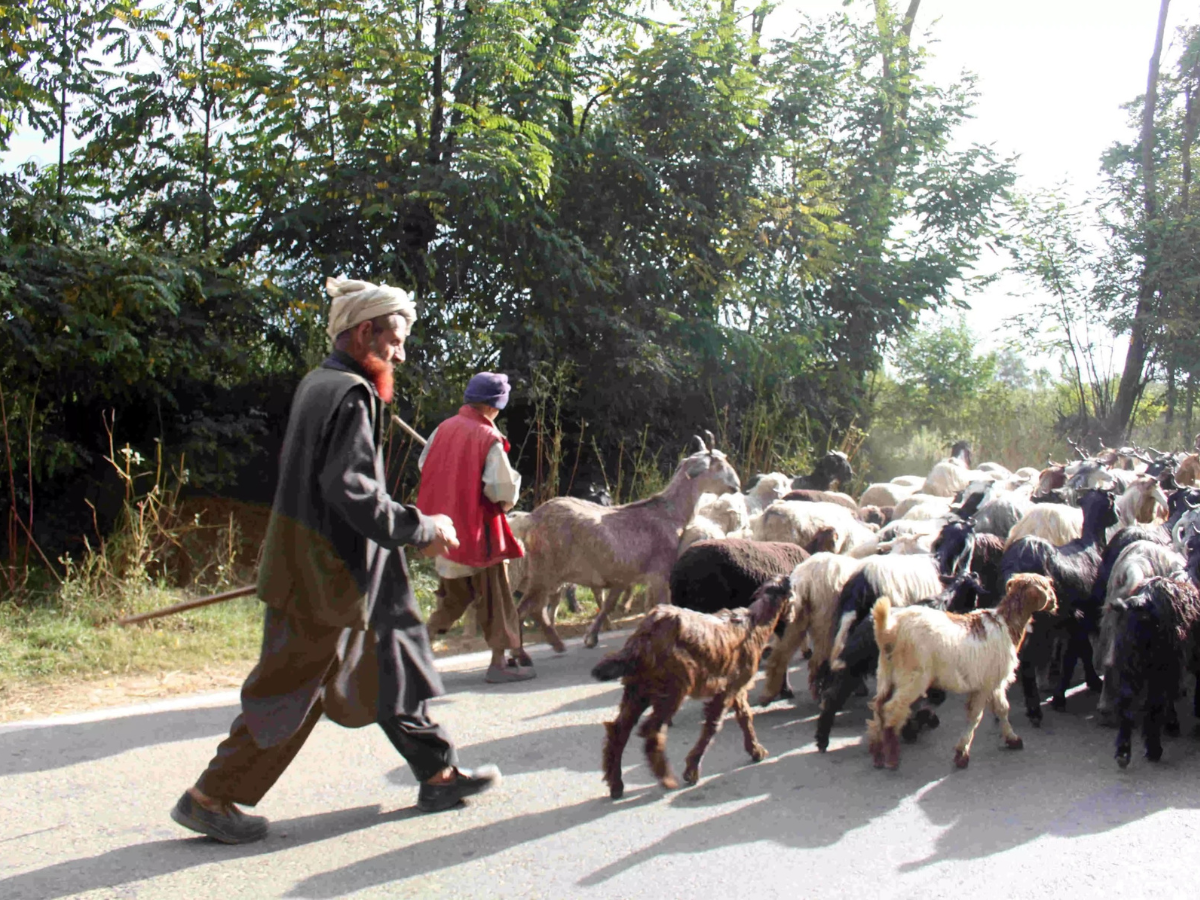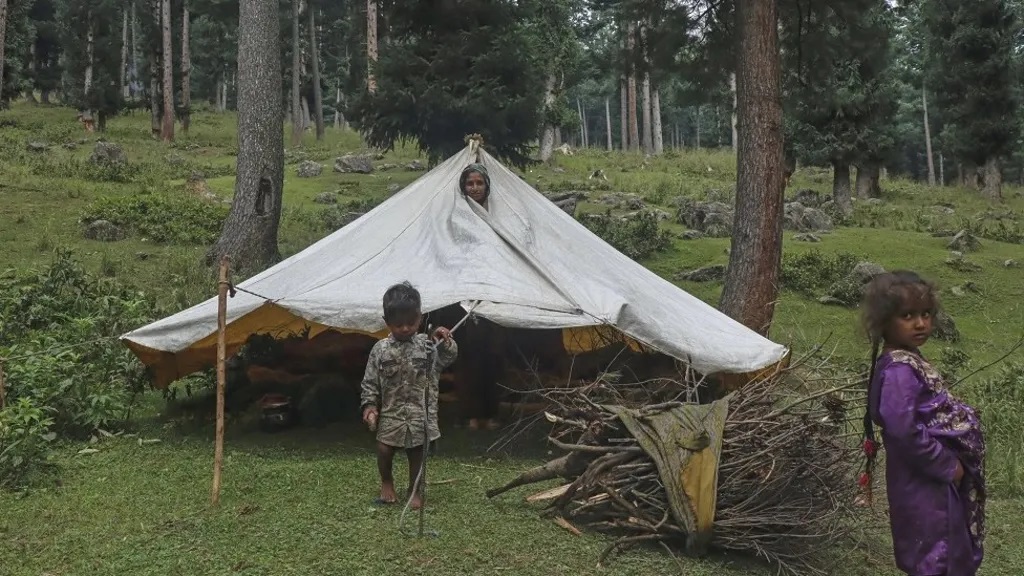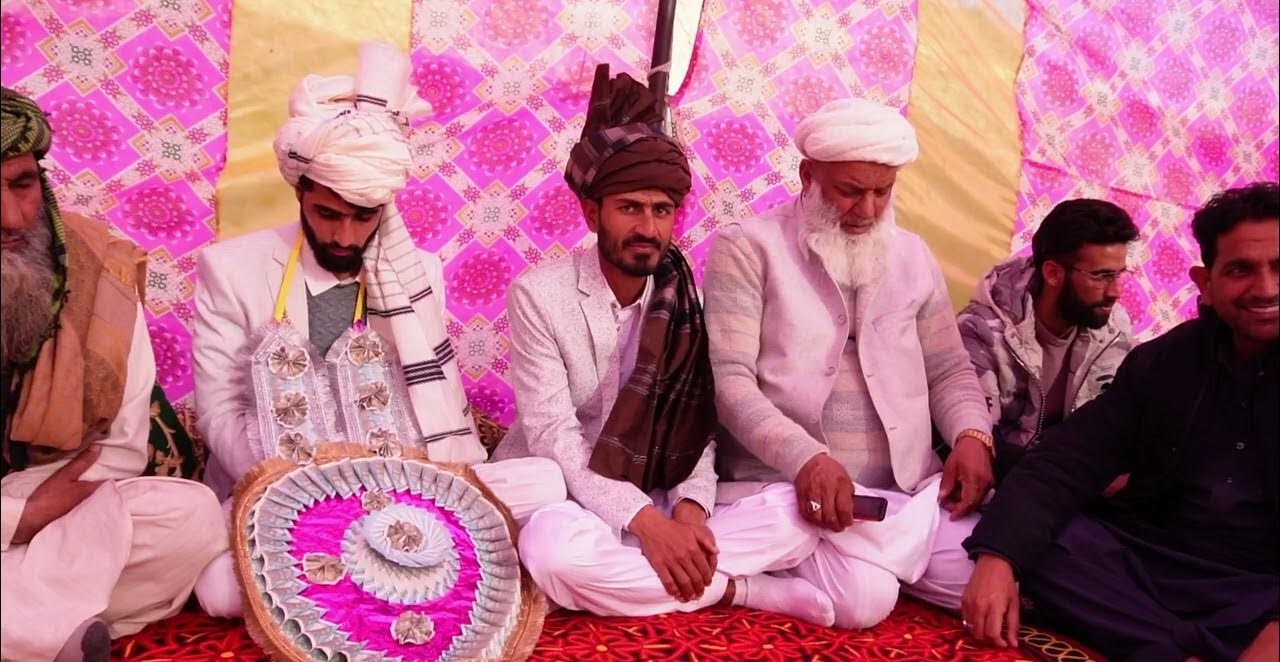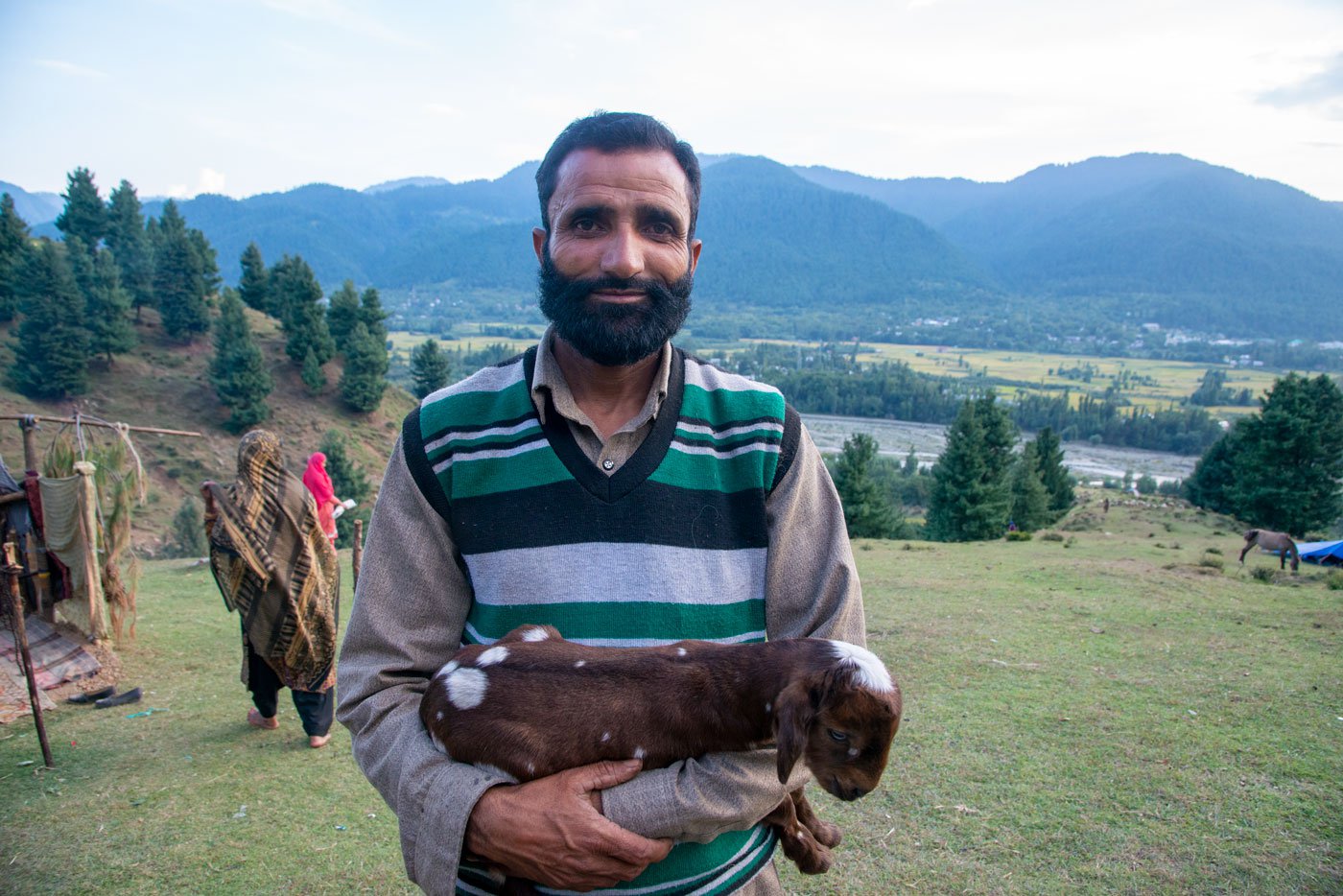State
Tribe Name
Art Type
short description
The Jammu and Kashmir Bakarwauhls have been listed as a Scheduled Tribe ever since the year 1991. They have been seasonally migrating from Jammu to Kashmir just for grazing their cattle. They spend their summer season in Kashmir and winter in Jammu. The Bakarwals were enumerated officially in the year 2001 Census. The Bakarwals primarily make their living from sheep and goat herding. Both Gujjars and Bakarwaals exhibit common linguistic, cultural, as well as religious practices; however, the two groups are different regarding occupations since Gujjars raise cattle whereas Bakarwals breed sheep and goats.
Thumbnail

Filter Postion
Right
Filter Background
Off
Theme
Filter Header Image

content
Image

description
The Jammu and Kashmir Bakarwauhls have been listed as a Scheduled Tribe ever since the year 1991. They have been seasonally migrating from Jammu to Kashmir just for grazing their cattle. They spend their summer season in Kashmir and winter in Jammu. The Bakarwals were enumerated officially in the year 2001 Census. The Bakarwals primarily make their living from sheep and goat herding. Both Gujjars and Bakarwaals exhibit common linguistic, cultural, as well as religious practices; however, the two groups are different regarding occupations since Gujjars raise cattle whereas Bakarwals breed sheep and goats.
Image Mode
landscape
Image

description
The main livelihood of the Bakarwal tribe is from husbanding sheep and goats, meat rearing, wool, hides, and dung, which are very useful to economies and diet. They are seasonally moving to and fro between alpine and lowland grazing in the Himalayas to seek pastures. However, increasing pressure of land has decreased the efficiency of traditional husbandry. Bakarwals possess extensive experience with regard to breeding and management practices of livestock; however, there appears to be an increasing necessity to follow more scientific approaches to increase livestock productivity and sustainability in this farming system.
Image Mode
landscape
Image

description
Marriage in the Bakarwal tribe passes largely unassisted by the bride and groom; family members and especially the father make the arrangements. The role of a woman in marriage decisions is limited since the wish for greater personal decisions would be subordinate to the rival desires of kin for their family affiliations or alliances. The customs of marriage comprise several rituals: mangnoo, nikkah, and the giving out of mahr. The general practice is to pay in the form of animals or cash. The principal reason behind marriage among this group of people is the consolidation of family ties and the preservation of cultural traditions.
Image Mode
landscape
Image

description
The Bakarwal tribe is facing severe hindrances in adopting their traditional livelihood pursuits today, mainly due to the factors like environmental changes, economic surveillances, and modernization. Climate change has inflicted adverse impact on grazing areas and water bodies, which has restricted livestock productivity. Migration and encroachment over their lands but limited source access to government resources have restricted this pastoral way of life. Ace economic constraint limiting them from reaching markets to sell livestock products is another problem. These have worsened with very limited educational and healthcare facilities which make it hard for the next generations to adjust with their cultural heritage intact.
Image Mode
landscape
Image

description
Sustainable grazing strategies of the Bakarwal Tribe include rotating cattle over a mix of pastures to avoid overgrazing. Research shows rotational grazing enhances the quality of the pasture, hence animal health and ecosystem health. Additionally, 40% of the Bakarwals incorporated environmentally friendly farming practices, particularly organic farming. They also rely on traditional wisdom to save water and forest products towards environmental preservation. The sustainable actions serve to reach an equilibrium point of balancing old-fashioned ways with today's surroundings.
Image Mode
landscape
promoted
On
Verified
On
